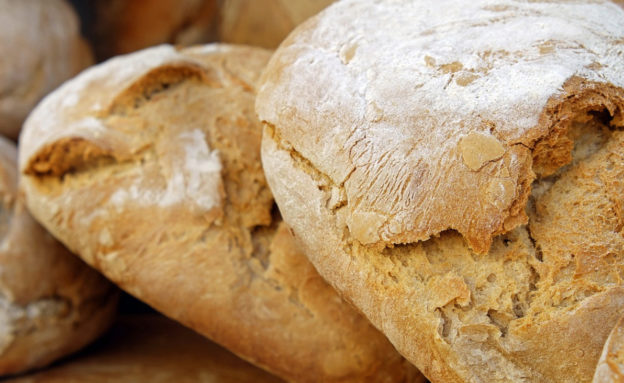At my office desk are various pieces of artwork from my children, and two photographs; one of my wife and I, and one of my two children. They sit there as visual reminders, because while my memory is not so bad that I completely forget them the moment I walk out of the house, pictures of my wife and children bring them to the front of my mind. In a sense, they become “present” in my thoughts as I am hopefully present in theirs, even though absent.
In Exodus 25, we see another picture of presence. Moses receives instructions to build a table, which will belong in the outer room of God’s tent. This table serves as the home for the bread of presence, which symbolised God’s presence and provision for his people. Not surprisingly then, this bread pointed forward to the true bread, Jesus, who is God present with us but also God’s provision for us.
In verse 23, Moses is instructed to “make a table of acacia wood. Two cubits shall be its length, a cubit its breadth, and a cubit and a half its height” (v.23). These dimensions equate to approximately 900mm long, 450mm wide, and 670mm high. As with the Ark of the Covenant, the table was to be overlaid with gold, along with a rim which stopped items from accidentally falling off (v.24). The table, as with the Ark, was a holy item, not common.
In addition, the table was to have “a rim around it a handbreadth wide, and a molding of gold around the rim” (v.25). This was probably a frame which went around the legs halfway down, about 75mm wide, giving extra strength and rigidity to the table. The Arch of Titus in Rome depicts a version of this table as part of the loot taken when the Romans destroyed Jerusalem in AD70.
Again, as with the Ark, the table was to have gold rings attached to its legs to ensure that it could be carried with poles (vv.26-7). The table was holy; it was improper for it to be picked up casually by the local moving company.
Instead, as with the Ark, acacia wood poles overlaid with gold were to be used for carrying the table (v.28). Perhaps as a concession to its lesser proximity to God’s presence, sitting in the outer part of the tabernacle, the poles were not permanently attached.
The table itself, while holy, was functional. It had no symbolic purpose except for what it held up off the floor. These items were typical items you might expect on a table at home; plates, a jug for liquid, bowls (v.29). These items were used for burning incense (which helped to shroud God’s presence from unholy gaze), and for pouring out drink offerings before God.
But the most significant item which the table upheld was loaves of bread. On this table, God told the Israelites to “set the bread of the Presence on the table before me regularly” (v.30). In Leviticus, this bread is described as twelve loaves of bread replaced every Sabbath, laid out in two rows on the table (Leviticus 24:5-9).
The significance of the bread is in what it represents: presence and provision. God does not need to eat, because He is eternal, uncreated, and unchanging. Rather, the loaves of bread spoke of what God was doing for His people.
There were twelve loaves, representing the twelve tribes of Israel which sat in God’s tent; the place of God’s special presence with Israel. Secondly, the loaves were constantly refreshed, demonstrating God’s continual provision for Israel.
The bread of presence reminds us of the same two things. The bread reminds us of God’s provision for us. Ultimately everything we have comes from God, whether it comes from others or from our labour which uses the gifts God gave us.
The bread of presence, continually refreshed, speaks to us as it did to Old Testament Israel of God’s continuing provision for us. Every breath we take and every move we make, God is watching over us.
No wonder then that Jesus, in teaching us how to pray, told us to ask God for our daily bread (Matt. 6:11). Our prayers draw us to remember the source of all our provision.
We can expect God to hear these prayers because he is not absent but present with us, or perhaps we could say he has made us present with him.
God did this through Jesus, who is the true bread of life. Jesus’ did not just miraculously provide for his people (John 6:1-15) as a picture of his provision, but truly is the bread which comes from heaven to give eternal life (John 6:22-35).
As God with us, Jesus is present with us just as the bread in the tent was near to God’s presence. Jesus is the bread of life, providing us with more than our daily bread but eternal life also through the Cross.
Let us eat of that bread of life, present with us daily.

